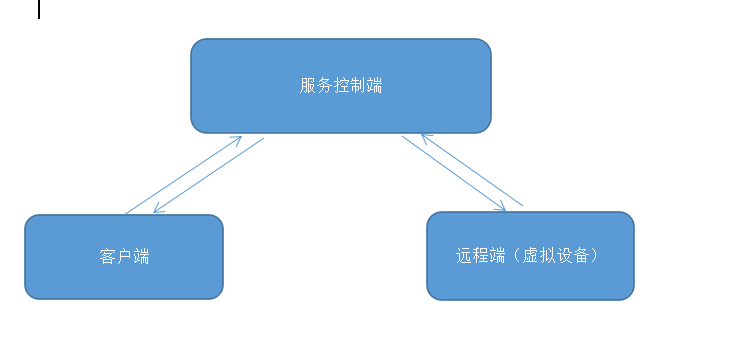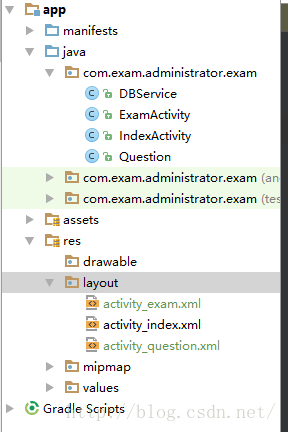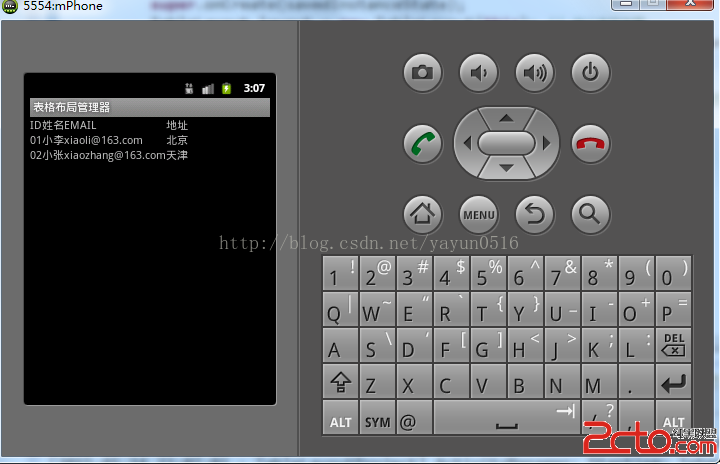在Android開發中,我們或許會碰到這麼一種業務需求,一項任務分成幾個子任務,子任務按順序先後執行,子任務全部執行完後,這項任務才算成功。那麼,利用幾個子線程順序執行是可以達到這個目的的,但是每個線程必須去手動控制,而且得在一個子線程執行完後,再開啟另一個子線程。或者,全部放到一個線程中讓其順序執行。這樣都可以做到,但是,如果這是一個後台任務,就得放到Service裡面,由於Service和Activity是同級的,所以,要執行耗時任務,就得在Service裡面開子線程來執行。那麼,有沒有一種簡單的方法來處理這個過程呢,答案就是IntentService。
什麼是IntentService,IntentService是繼承於Service並處理異步請求的一個類,在IntentService內有一個工作線程來處理耗時操作,啟動IntentService的方式和啟動傳統Service一樣,同時,當任務執行完後,IntentService會自動停止,而不需要我們去手動控制。另外,可以啟動IntentService多次,而每一個耗時操作會以工作隊列的方式在IntentService的onHandleIntent回調方法中執行,並且,每次只會執行一個工作線程,執行完第一個再執行第二個,以此類推。
所有請求都在一個單線程中,不會阻塞應用程序的主線程(UI Thread),同一時間只處理一個請求。
那麼,用IntentService有什麼好處呢?首先,我們省去了在Service中手動開線程的麻煩,第二,當操作完成時,我們不用手動停止Service。
Code
接下來讓我們來看看如何使用,我寫了一個Demo來模擬兩個耗時操作,Operation1與Operation2,先執行1,2必須等1執行完才能執行:
新建工程,新建一個繼承IntentService的類,我這裡是IntentServiceDemo.java
復制代碼
public class IntentServiceDemo extends IntentService {
public IntentServiceDemo() {
//必須實現父類的構造方法
super("IntentServiceDemo");
}
@Override
public IBinder onBind(Intent intent) {
System.out.println("onBind");
return super.onBind(intent);
}
@Override
public void onCreate() {
System.out.println("onCreate");
super.onCreate();
}
@Override
public void onStart(Intent intent, int startId) {
System.out.println("onStart");
super.onStart(intent, startId);
}
@Override
public int onStartCommand(Intent intent, int flags, int startId) {
System.out.println("onStartCommand");
return super.onStartCommand(intent, flags, startId);
}
@Override
public void setIntentRedelivery(boolean enabled) {
super.setIntentRedelivery(enabled);
System.out.println("setIntentRedelivery");
}
@Override
protected void onHandleIntent(Intent intent) {
//Intent是從Activity發過來的,攜帶識別參數,根據參數不同執行不同的任務
String action = intent.getExtras().getString("param");
if (action.equals("oper1")) {
System.out.println("Operation1");
}else if (action.equals("oper2")) {
System.out.println("Operation2");
}
try {
Thread.sleep(2000);
} catch (InterruptedException e) {
e.printStackTrace();
}
}
@Override
public void onDestroy() {
System.out.println("onDestroy");
super.onDestroy();
}
}
復制代碼
我把生命周期方法全打印出來了,待會我們來看看它執行的過程是怎樣的。接下來是Activity,在Activity中來啟動IntentService:
復制代碼
public class TestActivity extends Activity {
/** Called when the activity is first created. */
@Override
public void onCreate(Bundle savedInstanceState) {
super.onCreate(savedInstanceState);
setContentView(R.layout.main);
//可以啟動多次,每啟動一次,就會新建一個work thread,但IntentService的實例始終只有一個
//Operation 1
Intent startServiceIntent = new Intent("com.test.intentservice");
Bundle bundle = new Bundle();
bundle.putString("param", "oper1");
startServiceIntent.putExtras(bundle);
startService(startServiceIntent);
//Operation 2
Intent startServiceIntent2 = new Intent("com.test.intentservice");
Bundle bundle2 = new Bundle();
bundle2.putString("param", "oper2");
startServiceIntent2.putExtras(bundle2);
startService(startServiceIntent2);
}
}
復制代碼
最後,別忘了配置Service,因為它繼承於Service,所以,它還是一個Service,一定要配置,否則是不起作用的,開始我就是忘了,結果半天沒反應。
<service android:name=".IntentServiceDemo">
<intent-filter >
<action android:name="com.test.intentservice"/>
</intent-filter>
</service>
最後來看看執行結果:
1
從結果可以看到,onCreate方法只執行了一次,而onStartCommand和onStart方法執行了兩次,開啟了兩個Work Thread,這就證實了之前所說的,啟動多次,但IntentService的實例只有一個,這跟傳統的Service是一樣的。Operation1也是先於Operation2打印,並且我讓兩個操作間停頓了2s,最後是onDestroy銷毀了IntentService。
 Android學習之介紹Binder的簡單使用
Android學習之介紹Binder的簡單使用
 android 項目 local_Test_exam 代碼分享
android 項目 local_Test_exam 代碼分享
 android圖片處理之讓圖片變成圓形
android圖片處理之讓圖片變成圓形
 Android-Activity程序動態的生成表格布局管理器
Android-Activity程序動態的生成表格布局管理器